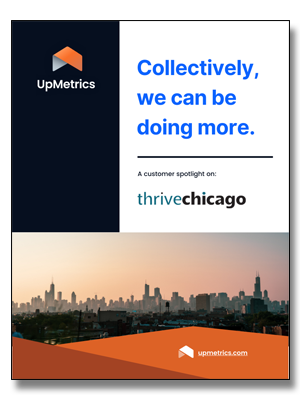The YMCA’s Workforce Development Program is Opening Doors for Disadvantaged Youth—and Keeping Them Open
Talk to Jen Salerno for even five minutes, and you already understand how much thought and care she puts into her work at the San Francisco YMCA’s Youth Workforce Development program. As the Director of a five-person department dedicated to helping end the cycle of poverty that affects many urban youth, Salerno brings together an understanding of the challenges facing program participants with a commitment to support them over the long term as they pursue careers in their chosen fields.
“Essentially, what happens is, we’re meeting these young people where they are,” Salerno explains. “That’s part of the structure of our whole foundation. We’re here to give them the skill sets to be successful on the job, but they’re the ones telling us where they want to get their feet wet.”
Background
“I started at Urban Services, YMCA, which is a branch of the YMCA that almost no one has heard of,” says Salerno with a laugh. “We do social services, exclusively, and we’ve been around for about 20 years, having started in the Fillmore district [in San Francisco].”
She continues: “It’s a pretty balanced synergy between mental health services—we’ve got a huge clinical department through our youth service bureaus—and youth- and family-focused programming and support. My department, which serves 16- to 24-year-olds, falls under that umbrella.”
When Salerno started with the organization two years ago, she was tasked with building an internship program. “The primary focus of this was uncharted territory for us—the Office of Economic and Workforce Development had given us some funding to start what’s called a ‘subsidized employment program.’”
The goal is to have the participants train in a comfortable, professional environment, so that they get real-world, workforce experience with employers (both internally, at the YMCA, and elsewhere). “We decided that 300 hours [of time on the job] would be best,” Salerno says.
“We do two cohorts per year, so that amount gives us perfect timing to get those two cohorts through. And then, at the end of it, ideally the employer is going to hire them, or if [the employer] doesn’t have the capacity to hire them or it’s not a good fit, then we’re going to keep working with these kids to make sure that they get unsubsidized employment elsewhere. So that’s the Empowerment to Employment (E2E) Program.”
"We're looking to provide these kids with life-changing opportunities that no one in their families has had before," she explains. "This is the chance to really curb generational poverty, and really level what has been, historically, an uneven playing field."
Mission
The E2E Program is one of three distinct programs under the workforce development umbrella at the Y. While E2E typically places participants in the fields of construction, nonprofit administration, or early childhood development, the second such program, Roadmap to Readiness (located at June Jordan School for Equity, in the Excelsior District), has an arts emphasis. Lastly, the Roots of Success Program (ROS) has a similar approach to E2E—there are six weeks of paid, professional development, but with an emphasis on job readiness to work in the ‘Green Economy.’
“We’re looking to provide these kids with life-changing opportunities that no one in their families has had before,” she explains. “This is the chance to really curb generational poverty, and really level what has been, historically, an uneven playing field. Those are our theories of change—if we offer these opportunities, our youth are going to be one step closer to where they need to be to become competitive professionally, ready to join the workforce, and ready to make very positive contributions to society. And we hope that they can do that while staying in their communities, and empowering others in their communities as well.”
Becoming Data Driven
Regarding metrics and analyzing progress, Salerno explains that the desire for data-driven storytelling around program outcomes is what led her and her program to UpMetrics.
“The YMCA is great and telling the qualitative side of the story, but I knew coming in that building a data-driven approach would be important. For my department alone, we have four different databases into which we have to enter information (most of them are from the funders), and none of these databases talks to the others.”
“One of the most important things for us to measure is, financially, where are our young people coming into the program, and where are they as we continue to work with them as they develop professionally. That’s key—economic mobility. Measuring demographics is really important as well, as is measuring how long somebody is able to retain a job, and if they lose a job, how quickly are they able to get a new position?”
As is clear from the above, there’s a real, longitudinal focus to the programming.
“Sometimes, it takes years—we have to work on confidence, and soft skills, and social & emotional learning. People who may have experienced trauma in the community, or trauma at home—if you’re dealing with that kind of heavy stuff, then it’s going to be impossible to go to work and perform to the best of your abilities. So, we go through all of that, we teach trauma-informed care, in addition to more basic kind of soft-skills development.
“They’re never ‘gone,’” Salerno says. “We keep the door open.”
Learn more about the YMCA’s Youth Workforce Development program.

May 28, 2019
